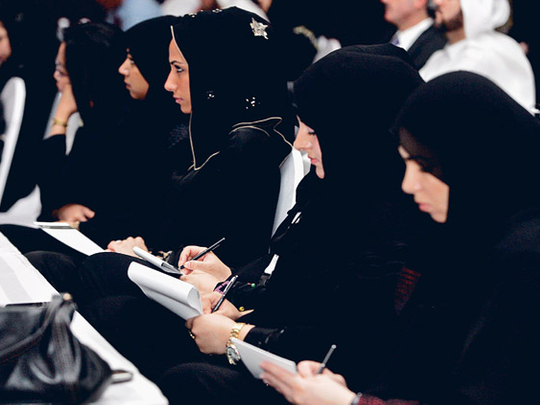
Dubai: The UAE's unemployment rate fell to 4.2 per cent last year from double-digit levels, despite the impact of the global financial crisis, government statistics show.
However, minister of economy Sultan Bin Saeed Al Mansouri said this level is still too high for comfort.
While releasing the UAE Economic Report for 2009 on Saturday, he took particular note of the tendency of Emirati professionals to be ‘picky' and constantly be on the lookout for better prospects.
The report showed that 53 per cent of the UAE population is employed while 19.9 per cent has no desire to work. Employment rate among expatriate workers is 79 per cent while about 45 per cent of UAE nationals are employed. The report was released by the National Statistics Bureau.
The report highlighted that the majority of the unemployed are fresh graduates under the age of 25. Among the emirates, the unemployment rate is lowest in Dubai due to the high level of economic activity.
The economically active workforce is aged between 25 to 54 years. Of this group, 42 per cent is female while the average of the male working population in this age bracket is more than double — 89 per cent.
The report showed an unexpected increase in the UAE population, touching 8.19 million in 2009, up from 8.07 million in 2008, a figure that is nearly double the 4.1 million reported during the 2006 census.
With a total GDP of Dh914 billion, this translates to Dh111,599 per capita GDP in 2009 — one of the highest in the world.
A senior official at the National Statistic Bureau said that although the figure is higher than the previous estimations, it is very accurate based on the administrative record of the bureau.
The report said that despite the economic downturn and shortage of job opportunities, expatriates are still relocating to the UAE.
About 81.9 per cent of the population is aged between 15 and 59 and 16.8 per cent is aged under 14 while only 1.3 per cent is aged above 60.
Significant improvement
The education sector witnessed remarkable growth in 2008 and 2009. Statistics put the number of schools in the UAE at 1,183 and the total number of students at 75,0234. In all there are 47,267 teachers. Most of the schools are in the public sector with 462 institutions in the private sector accounting for 487,861 students.
The report showed that 54 per cent of the UAE population has a secondary degree and put illiteracy levels at 7 per cent. This compared with secondary degrees for 47 per cent of expatriates and 5 per cent illiteracy in that segment. While there was only one university in the UAE in 1977, the number of universities and higher colleges and institutes had increased to 64 in 2009/2010.
The report also ranks the UAE number one in terms of welfare measures in the Middle East and fifteenth out of 160 countries globally.












